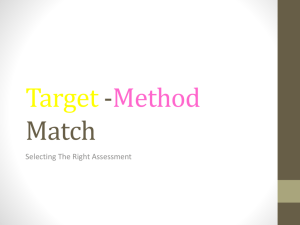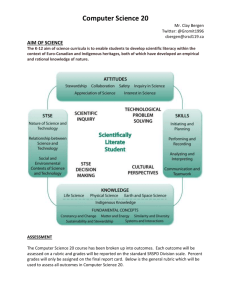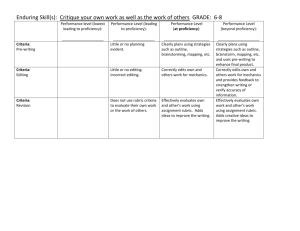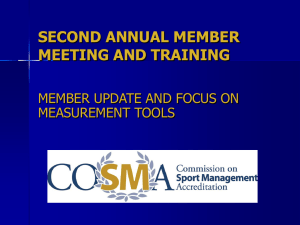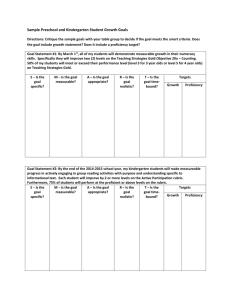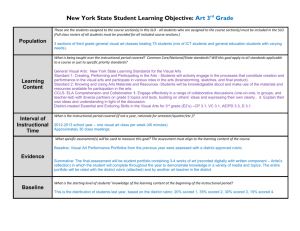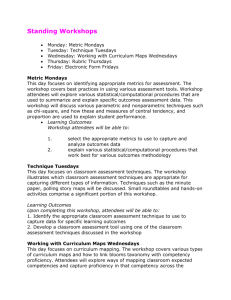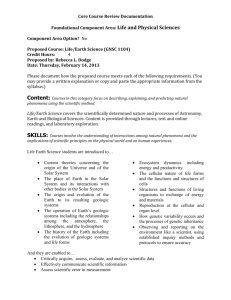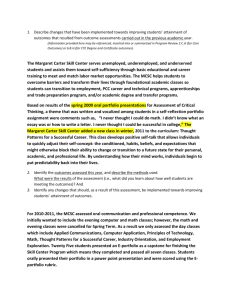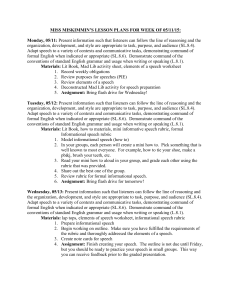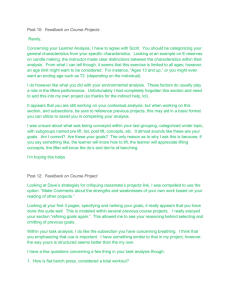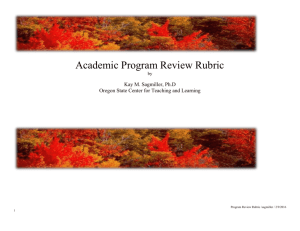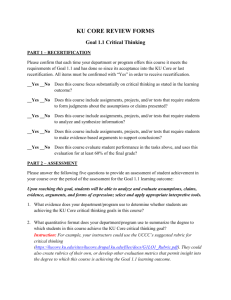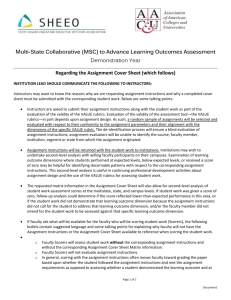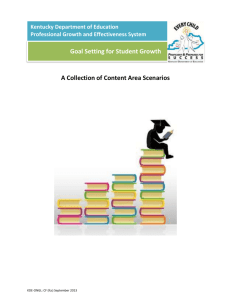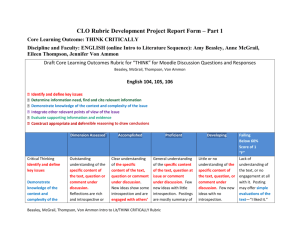Teagle Report
advertisement
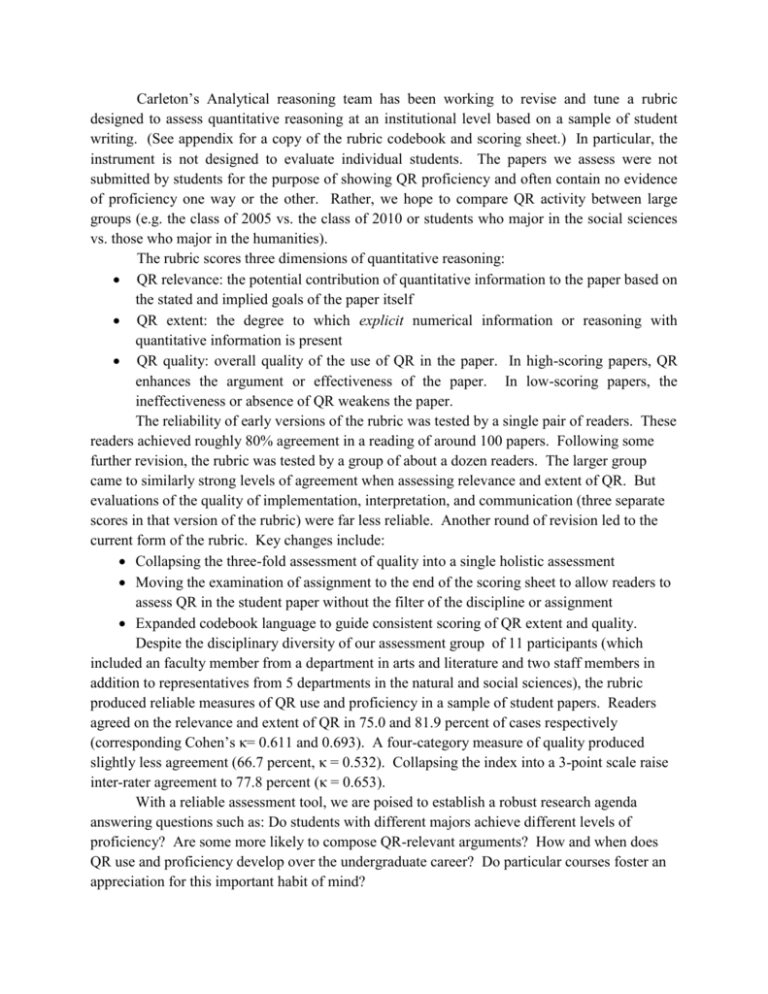
Carleton’s Analytical reasoning team has been working to revise and tune a rubric designed to assess quantitative reasoning at an institutional level based on a sample of student writing. (See appendix for a copy of the rubric codebook and scoring sheet.) In particular, the instrument is not designed to evaluate individual students. The papers we assess were not submitted by students for the purpose of showing QR proficiency and often contain no evidence of proficiency one way or the other. Rather, we hope to compare QR activity between large groups (e.g. the class of 2005 vs. the class of 2010 or students who major in the social sciences vs. those who major in the humanities). The rubric scores three dimensions of quantitative reasoning: QR relevance: the potential contribution of quantitative information to the paper based on the stated and implied goals of the paper itself QR extent: the degree to which explicit numerical information or reasoning with quantitative information is present QR quality: overall quality of the use of QR in the paper. In high-scoring papers, QR enhances the argument or effectiveness of the paper. In low-scoring papers, the ineffectiveness or absence of QR weakens the paper. The reliability of early versions of the rubric was tested by a single pair of readers. These readers achieved roughly 80% agreement in a reading of around 100 papers. Following some further revision, the rubric was tested by a group of about a dozen readers. The larger group came to similarly strong levels of agreement when assessing relevance and extent of QR. But evaluations of the quality of implementation, interpretation, and communication (three separate scores in that version of the rubric) were far less reliable. Another round of revision led to the current form of the rubric. Key changes include: Collapsing the three-fold assessment of quality into a single holistic assessment Moving the examination of assignment to the end of the scoring sheet to allow readers to assess QR in the student paper without the filter of the discipline or assignment Expanded codebook language to guide consistent scoring of QR extent and quality. Despite the disciplinary diversity of our assessment group of 11 participants (which included an faculty member from a department in arts and literature and two staff members in addition to representatives from 5 departments in the natural and social sciences), the rubric produced reliable measures of QR use and proficiency in a sample of student papers. Readers agreed on the relevance and extent of QR in 75.0 and 81.9 percent of cases respectively (corresponding Cohen’s κ= 0.611 and 0.693). A four-category measure of quality produced slightly less agreement (66.7 percent, κ = 0.532). Collapsing the index into a 3-point scale raise inter-rater agreement to 77.8 percent (κ = 0.653). With a reliable assessment tool, we are poised to establish a robust research agenda answering questions such as: Do students with different majors achieve different levels of proficiency? Are some more likely to compose QR-relevant arguments? How and when does QR use and proficiency develop over the undergraduate career? Do particular courses foster an appreciation for this important habit of mind?
